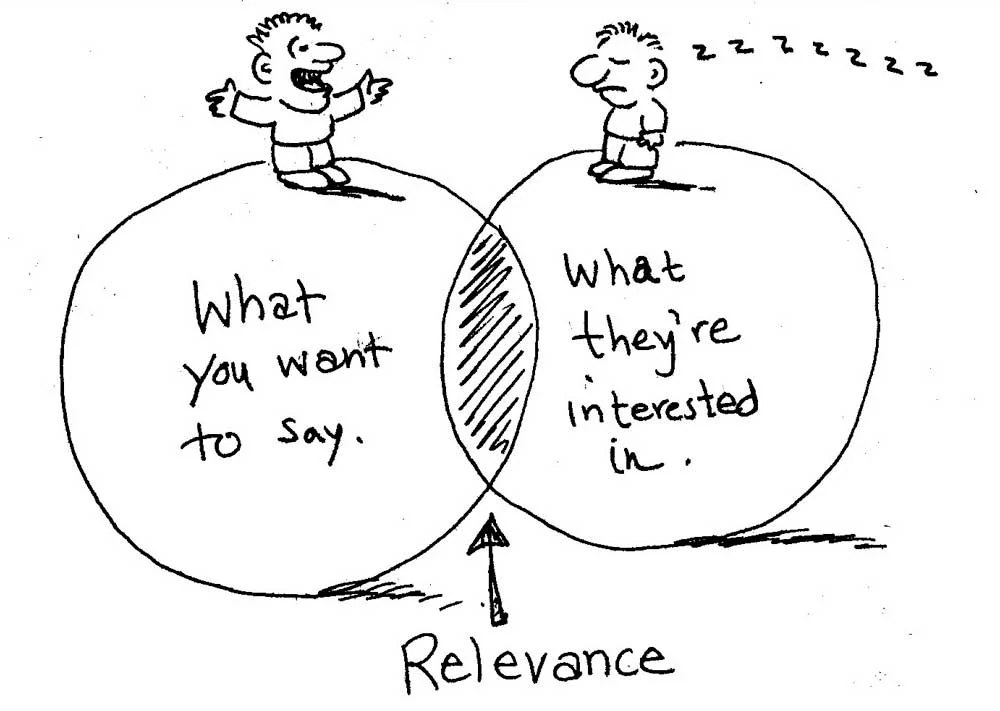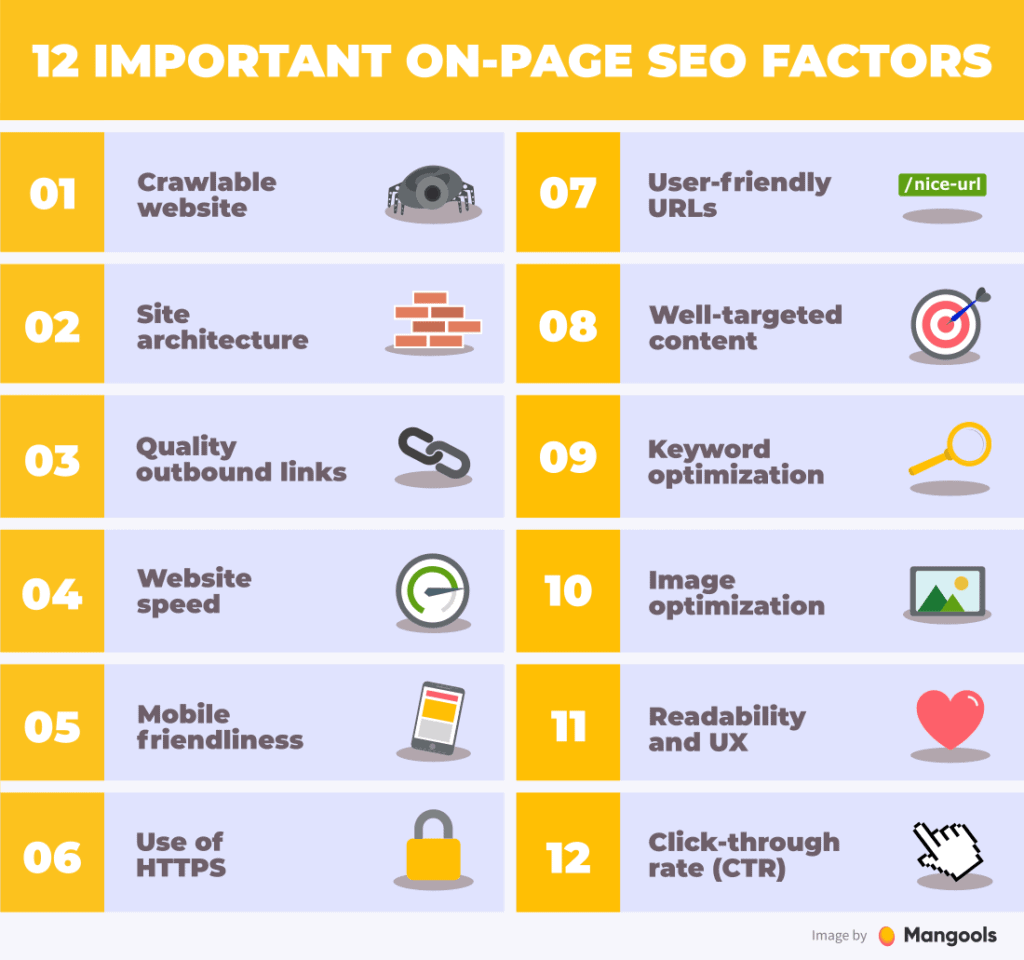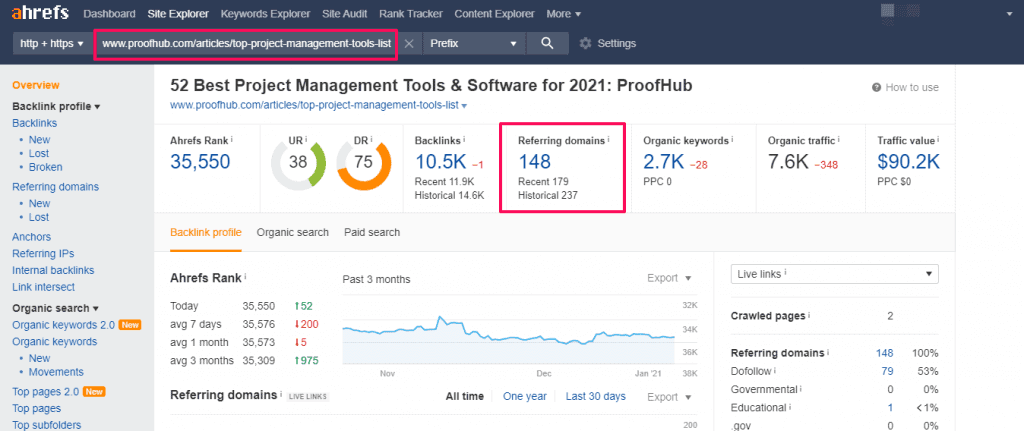The 7 Key Components of SEO to Focus On
Search engine optimisation (SEO) is a mystical art form. But it comes down to understanding and executing some core components properly. Do that, and you'll be well on your way to ranking higher in search results and driving more organic traffic to your website.
In this comprehensive guide, we'll break down the essential elements of an effective SEO strategy. Master these fundamentals, and you'll have the framework in place for SEO success.
Table of Contents
7 Components of SEO to Focus On
Knowing Your Audience Is The Cornerstone

The first component that serves as the foundation for SEO is understanding your target audience inside and out. Who are the people searching for your products, services, or information? What words and phrases are they likely using in search engines to find you? What questions do they have? What problems are they trying to solve?
You need to understand your audience intimately:
- Demographics like age, gender, income, education level, geographic location, etc. This allows you to create tailored content that speaks directly to them.
- Needs and interests. What information are they hungry for? Why would they be searching for you? Identify and address these explicitly.
- Behavior patterns. Where do they spend time online? What types of content do they consume? Tailor your outreach strategy accordingly.
- Language and terminology. What words and phrases do they use when discussing your industry or topic? Incorporate these directly into your content to match their search patterns.
The sharper your audience profile, the more you can better optimise content for them. And that's exactly what search engines want to see – that your site provides relevant, valuable information tailored to search intent.
So get crystal clear on who your audience is, what makes them tick, and what they care about. This understanding must permeate every aspect of your SEO efforts.
Keyword Research Lays The SEO Groundwork
Now that you know who you want to reach, the next step is researching the keywords and phrases they're searching for.
Thorough keyword research provides the intelligence you need to:
- Identify high-opportunity keywords to target in your content and SEO. Focus on terms with sufficient search volume and relatively low competition.
- Discover long-tail variations around your core terms. These specific long phrases often convert well for qualified traffic.
- Understand user search intent for each keyword. This ensures you can provide the right content to match.
- Gain insights into how your audience describes what they want in their own words. Use this language directly in your SEO content.
- See the types of content ranking for target keywords – this allows you to model what works and improve upon it.
- Identify keyword gaps where you don't rank well today but have an opportunity to with optimised content.
- Prioritise keyword targets and develop your content strategy in an informed, data-driven way.
Keyword research provides the information foundation upon which your entire SEO strategy is built. Invest the time upfront to do this well and systematically. Use a combination of tools like Google Keyword Planner, SEMrush, Ahrefs, Moz Keyword Explorer, Soovle, and UberSuggest to uncover all the intelligence you need.
Optimised SEO Content Is The Key Engine

Creating high-quality, keyword-optimised content is the meat and potatoes of executing your SEO strategy. This should comprise the majority of your ongoing optimisation efforts.
Your content needs to:
- Directly align with your targeted keywords and phrases while reading naturally for users.
- Provide comprehensive, in-depth information focused on serving searcher intent.
- Utilise strategic internal links to pass authority and signal relevance.
- Follow best practices for on-page SEO and website structure.
- Publish frequently to keep pages fresh and crawlable.
- Distribute broadly through social media, outreach, and amplification tactics.
Ideally, you want to take an omnichannel content marketing approach across formats like:
- Long-form articles and blog content to go deep on topics.
- Shorter micro-content like social media posts to pique interest.
- Infographics, photos, videos, and illustrations vary in format.
- Podcasts, webinars, and presentations to expand your reach.
- FAQs, guides, and resources to cover a wide range of queries and needs.
The search engines want to see you consistently producing content tailored to match user queries. So, this should be the engine driving your SEO efforts forward daily.
Technical SEO Elements Enable Discovery
Creating fantastic content only applies if search engines can find and decipher it correctly. That's where technical SEO optimisation comes into play.
It includes essential elements like:
- Ensuring your site architecture is clean, semantic, and mobile-friendly.
- Optimising page speed and performance with best practices.
- Building a structured internal linking strategy to boost signals.
- Adding schema markup for rich results in SERPs.
- Optimising images with alt text and title tags.
- Creating XML site maps to facilitate crawling.
- Implementing proper 301 redirects for changed URLs.
- Fixing any indexation or crawl issues.
- Monitoring site traffic in Google Analytics.
Getting these technical elements right enables search engines to crawl easily, index, categorise, and rank your content. It's the grease keeping the SEO wheels spinning smoothly.
Technical SEO establishes the optimal site environment for your content to perform well. So pay attention to it.
Links Remain A Key Ranking Signal

Google has become increasingly adept at evaluating the quality of links pointing to a webpage. However, earned links from legitimate sites remain an influential ranking factor.
The key is focusing on acquiring links that:
- Are relevant to your content and valued by users.
- Come from high authority, trustworthy sources.
- Utilise natural anchor text, not overly optimised.
- They are editorially given, not paid or artificial.
Tactics to earn quality links include:
- Producing genuinely helpful content that sites want to reference.
- Reaching out to appropriate website owners and bloggers to share your content.
- Securing reputable media coverage and featured links.
- Participating actively in your industry to build community.
- Landing guest posting opportunities by providing value.
Just be sure to avoid shady link schemes or black hat techniques. That can get you penalised by Google. The emphasis should be slowly growing your link profile from reputable sources, not racking up as many links as possible.
Quality over quantity is the link-building strategy Google rewards.
Local SEO Boosts You In The Community
Optimising for local SEO is critical for businesses selling products or services locally. It helps you get found by nearby customers searching on Google.
Local SEO best practices include:
- Accurately fill out and claim your Google My Business listing. This serves as your digital storefront.
- Optimising your GMB listing with photos, descriptions, attributes, and contact info.
- Getting reviews, photos, and other user-generated content to build social proof.
- Ensuring your site includes your business name, address, and contact info.
- Creating location-optimised content like “best X in Denver” to rank locally.
- Optimising Google Posts with local events, sales, and updates.
- Building citations and links from directory sites and niche local sites.
- Engaging locally on social media by participating in groups and discussions.
The more signals you can send that you're the go-to business in your geographic area, the better you'll rank in the coveted local pack and map listings.
Amplify Your Content To Widen Impact

You've created fantastic SEO content. It's time to distribute it widely to get it in front of your audience.
Amplification tactics include:
- Promoting new content across your social media channels.
- Repurposing content into different formats like video or podcasts.
- Pitching your content to other sites for potential syndication.
- Sending email newsletters highlighting your latest content.
- Incorporating content offers into your advertising and campaigns.
- Using social media ads to increase content visibility.
- Leveraging influencers and brand advocates to share content.
- Monitoring trending topics to interject your content and expertise.
Broader amplification expands your reach, gets more engagement, and signals that your content offers value. All of this helps reinforce your authority on topics and earns you links.
Track Rankings and Analytics to Measure Progress
After rolling out your SEO strategy, you must monitor its progress and impact. Which rankings are improving? How much organic traffic growth are you seeing? What content resonates best?
Use tools like:
- Google Search Console to track how pages rank for target keywords. See if you're trending up over time.
- Google Analytics to measure increases in organic traffic and conversions. Report on ROI.
- Click-through-rate data to identify high-performance content. Double down on what works.
- Ranking reports to catch any dropping pages that need re-optimisation.
- Site audits to identify new technical issues impacting performance.
Proper tracking provides visibility into what parts of your strategy are working and what needs improvement. Continually refine your approach based on the data. SEO is never “set it and forget it.”
The Recipe For SEO Success
There, you have the essential ingredients that compose a robust SEO strategy. Individually, each component plays an important role. But it's combining them all that kicks your efforts into high gear.
Audience understanding, keyword research, optimised content, technical site enhancements, quality links, local SEO, amplification, and analytics tracking are all integral elements of the recipe.
Master these fundamentals execute them diligently, and you'll position yourself for higher rankings, increased organic traffic, and SEO success. Now, get out there and start cooking up some results!
Frequently Asked Questions About SEO
Still have some lingering questions about SEO strategies and best practices? Here are answers to some of the most frequently asked questions:
What are some fast ways to improve my site's SEO?
Some quick SEO wins include optimising page titles and meta descriptions, improving page speed, updating image alt text, creating an XML sitemap, and fixing any technical errors on the site. Getting the basics right goes a long way.
How often should I be publishing new content?
Ideally, it would help if you aimed to publish one or more new pieces of content per week. This ensures you have a steady stream of fresh, keyword-optimised content on your site. More content gives search engines more opportunities to rank you.
Is backlinking still crucial for SEO?
Yes, backlinks remain one of the most vital signals for search ranking algorithms. Focus on slowly acquiring editorially-given links from reputable, high-authority sites related to your niche. Avoid low-quality links or link schemes.
What's better – targeting short-tail or long-tail keywords?
The best approach is using a combined strategy. Target short-tail keywords for higher volume opportunities while also optimising for longer, more specific long-tail phrases that indicate strong user intent.
How much does page speed matter for SEO?
Page speed is a slight overall ranking factor but still worth optimising. Pages that load faster provide a better user experience. Aim for load times under 3 seconds on mobile and desktop. Eliminate render-blocking elements, compress images, and optimise code.
How often should I update old content for SEO purposes?
There is no definitive rule, but a good best practice is to revisit and refresh existing content at least once or twice a year. This helps keep pages fresh and prevents them from becoming outdated, improving relevance.
Focus on mastering the core components of effective SEO, and you'll be well on your way to increasing your search presence. With the right strategy and diligent execution, your website can gain visibility and attract qualified organic traffic from target audiences.
